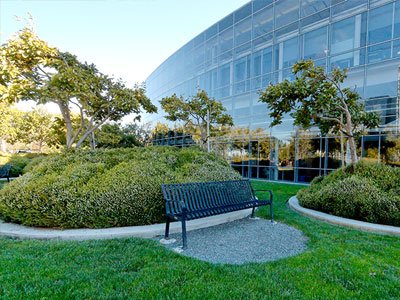Nigerian Education System vs Finland School System: 7 Things to Learn

Nigerian Education System vs Finland School System. Here are 7 things to learn from this comparison.
As of today, so many researches have it that Finland parades one of, if not, the best education system in the world (Business Insider, 2016). Their ability to successfully apply their ideology of “Less is More” on every segment of their education sector has really paid off; as compared with education in Nigeria.
The question to ask now is:
Can Nigeria’s school system also achieve this feat? Yes, I think, but a lot would have to be changed.
With the deplorable state of affairs in the management of the educational system or academic sector in Nigeria, it is therefore pertinent to make a comparative analysis of both systems. And also seek out few ideas from Finland education system that can revamp the Nigerian education system.
Read also: The Problems with Nigerian Education System
Nigerian Education System vs Finland School System
I am of the belief that the academic sector of Nigeria can be completely transformed, if stakeholders could learn from the Finland system of education. There are at least seven things Nigerian education system should learn from fin System.
1. Adequate and Timely Funding
Funding Education in Nigeria
Nigeria has fallen short of this responsibility of adequate and timely funding of its education system. The responsibility of funding is responded with the federal, state and local government in Nigeria for the public schools but for the private schools not, it is the perception of the Nigerian government that education has no benefit to the country. As it does not produce money for the country and so very little attention is given to it.
This makes the academic sector the least funded sector with priorities rather given to agriculture, petroleum, security and politics.
This is why academic bodies in the Nigeria education such as National Union of Teachers (NUT), Academic Staff Union of Universities (ASUU), Non-Academic Staff Union of Universities (NASUU), National Universities Commission (NUC), National Business Technical Education Board, often undergo industrial actions in agitation for funding.
Funding Education in Finland
Whereas in Finland there is adequate and timely funding with focus on both public schools and private schools. The responsibility of funding here is divided between the state and local authorities: this funding is based on the condition of the areas and the numbers of 6-15 year olds living in the community.
This implies that more funding is appropriated to communities that are poor through education local authorities for equity in education and maximization of the full potential of a child. Universities in Finland receive funding from the state but they are also expected to rise external funding.
Read also: What to do with your Free Time during the ASUU Strikes
2. Free Education is Granted to all
Free and Compulsory Education in Finland
The funding of education in Finland includes free tuition fees at all levels. This is accompanied by free meals. The secondary school students have the right to free meals; and in the higher education, students pay for meals at a subsidized rate. The responsibility of students in the higher education is to buy books if not in any special support scheme but if in a special scheme such students cannot buy books. Transportation for students residing in long distances from schools are made completely cost free. Funding is granted by government.
In the adult education, students are expected to make payments; students here are working-class and can cater for their academic needs comfortably and independently without the support of government. To ensure the opportunities to study for everyone, there is a well structured system of study grants and loans, with this grants and loans, we can study comfortably. Payments or refunds are made gradually when such student has been employed.
Is Education Free in Nigeria?
Rather, in Nigeria it is popularly said education is meant just for the rich. This goes to show the lackadaisical approach towards education in Nigeria. The poor are left with nothing. Less attention is paid to the education right of the poor masses in Nigeria. Schools of the poor are not maintained. Teachers are not paid, no free meals, no free transportation, no education grant or loans. One can only imagine this magnitude of neglect in the Nigeria education system.
3. Curriculum in Finland Educational System
Curriculum in Finland
Finland has well structured core National curriculum for all levels of education. Be it early childhood education and care, pre-primary education, basic education, general upper secondary and upper secondary vocational qualifications and the requirements of competences-based qualifications, there is a uniform curriculum to follow.
The curriculum of Finland determines the very core goals, teaching-learning constituents and principles for teaching. By this, those who provide learning prepare the curriculum, design it in concordance with the core national scheme of work. Adherence to this is extremely straight.
Curriculum and Scheme of Work in Nigeria
In Nigeria, there is a National curriculum or scheme work, but the question is who implements it? Who supervises and ensures compliance to the National scheme of work.
Often times, various schools emerge with different curriculum or scheme of work. This ensures disparity in the entire school system as one school would try to implement British curriculum; another, American curriculum; and the other French curriculum. This whole disparity has thrown the Nigerian educational system to the dust as there is very poor supervision, monitoring and strict adherence to core national curriculum.
4. Educational Structure in Finland
Finland Education Structure
The Finland school system stresses years of basic Education which includes early childhood education and care and pre-primary education, while 3 years are allotted for the upper general secondary and vocational upper secondary education respectively. At the end of general upper secondary education, the students are tested in a National matriculation examination.
Students who make it in this examination is admitted into tertiary institutions. Whereas, for those students that are of upper vocational secondary, the completion of this programme is an eligibility to higher education. This certification from this programme does not replace higher education degrees, rather it complements.
In Finland, vocational education is held firmly. As at this level, skills are learnt and professionalism is established. The upper secondary aims at broad based knowledge which is flexible, personalized and has modular course structure. Combining general and vocational studies for eligibility to higher education.
The Finland school system empasizes that anyone with polytechnic degree and wishes to obtain polytechnic masters degree must have a 3 years work experience. The polytechnic master’s degree can be obtained in one year and 5 months while Finland university masters degree has a duration of 2 years. The doctorate degree level has a duration of 4 years. The focus here is more of learning than testing.
Nigerian Education Structure
The education structure of Nigeria is 9-3-3-4. This implies 9 years of pre-primary and primary, 3 years of lower secondary and 3 years of upper secondary and four (4) years of tertiary education. In all of these, the Nigerian education system pays little or no attention to vocational education in terms of funding, implementation, supervision and monitoring.
The upper secondary seeks only to obtain certificates which are obtained from writing two highly revered examinations namely NECO (National Examination Council) which is a Nigerian examination and WAEC (West African Examination Council) which is an African Regional Examination body.
5. Professional Teachers/Professionalism in Teaching
Teachers in Finland
Finland school system focuses more on having professional teachers than the classrooms. This attaches nobility and prestige to the profession. The system of education in Finland ensures experts and subject focused teachers are selected to provide instructions.
The system does not rely on extreme testing procedure to drive the performance students but relies on the expertise and accountability of teachers who are knowledgeable and committed to their students. Being professional teachers implies undergoing a special training in teachers training institutions, education departments of higher institutions.
5 Reasons Government Should Focus More On Teachers Not Students
Teachers in Nigeria
The Nigerian system has mostly in its schools non-educationally trained teachers. These teachers come from different disciplines and suddenly mount class rooms without knowing the intricacies of education; such as theory of education, pedagogical content knowledge and subject didactics and practice. This is translated into poor performance of students and pupils.
Read also: How to Become a Professional Teacher
6. Admission and Examination into Higher Education
Admission into Higher Education in Finland
It is a lot easier to have or gain admission into higher school of learning in Finland, as there is just one matriculation examination for both those in the general upper secondary and vocational secondary. The rigour of writing as many examinations as possible is absent.
This does not down grade the standard of education or examination in Finland, as they focus more on learning than testing. The Finnish believe the phrase “Less is More“. Where a student fails this examination, he has to re-sit and there are flexible programmes such a student can attend to make up for the failed paper to gain admission.
Admission into Higher Education in Nigeria
The Nigerian education society is totally different. A student faces fierce and rigorous examinations just to earn the studentship or candidacy in higher institution. This implies that; even after these examinations, there are still the following examination waiting to be written: JAMB/UTME and Post-UTME.
The UTME (Universities Tertiary Matriculation Examination) is a university matriculation examination for students who have made it from NECO and WAEC and who aspire to attend a university.
The Post-UTME is another examination given by individual universities to students who have scored the required score or points in JAMB/UTME. The focus here is testing rather than learning.
Read also: Jamb Admission Cut Off Marks for Higher Institutions
7. High Quality Teaching
Quality of Pedagogy in Finland
High quality teaching is key to the success of Finland; as it attains the highest pedestal among the comity of nations of the world. Teaching and learning in Finland is very practical. Everything is made real in such a way that a student does not only begin to imagine what such a thing being described would look like. The way it works, its properties, how it is made, its procedure and a whole lot about that subject is usually made known.
Hence, the availability of all teaching and learning and equipment. The Finnish education authorities do well to supervise, monitor and administer the standard and the quality of teaching and learning. The authorities provide these tools and equipment through effective funding to enhance effective teaching and learning.
Quality of Teaching in Nigeria
The education system in Nigeria is the exact opposite, as students would barely understand what the teacher teaches or describes. The teacher is limited to only the chalk in hands and chalk board and his pointer. The teacher and the students are limited only to the classroom. There are little or no instructional materials tools and equipment for teaching and learning.
Read also: 10 Top 21st Century Teacher Skill Set
The education authorities care less about even the environment of learning, let alone tools and equipment for teaching and learning. Poor funding has led to the decay in the system as well ineffective supervision and monitoring.
Here is a good news.
The quality of education in Nigeria can be improved through the utilization of Gopius LMS. A Learning Management System for blended learning in schools and businesses in Nigeria.
Conclusion
In as much as Finland has a credible and effective educational system in the world, Nigeria can borrow a leaf from the finish system. Adopting their style would not be bad. Before Finland finally became what it is today, it used to look up to the likes of Malaysia, Netherlands and other countries.
As it is usually said, “a tree that wishes to live long must stand close to a kola tree”. Hence, there is a need for complete overhaul in Nigeria’s education system. Ranging from those in authority, initiating policies with implementation and enforcement in high focus, revamping school structures with a more teaching and learning environment. Ensuring professionalism in teaching, increasing the salaries of teachers, as teachers work like elephants but eat like ants.
Teachers in Finland earn $38,500 annually but in Nigeria the case is different. Better things lie ahead for Nigeria if more effort is exerted in this regard.
Feel free to let us know what you think on the topic “Nigerian Education System vs Finland school System”, we would be glad to learn from you.







